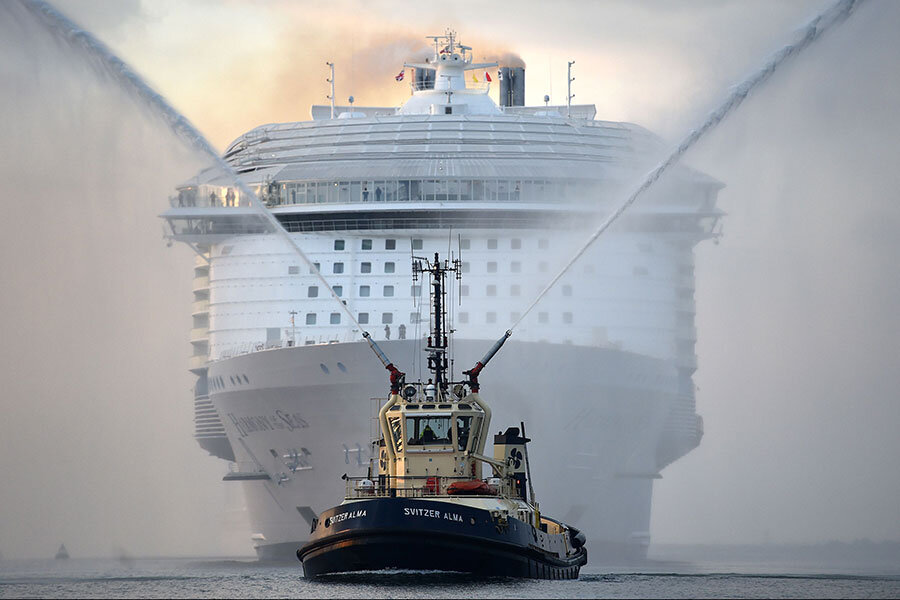Cruise ships start to come under scrutiny as massive pollution machines
Loading...
While increased pressure on carmakers to improve emissions continues, regulators and environmental groups are also scrutinizing other forms of transportation-related emissions.
Cruise ships regularly depart major ports with thousands of passengers onboard, and they are now being called out as major sources of pollution.
At full power, the massive diesel engines propelling the Harmony of the Seas—the world's largest cruise ship—can burn about 66,000 gallons of diesel fuel a day.
That fuel produces much higher levels of pollutants than the diesel used in cars, notes The Guardian in a report on the environmental impact of the huge ship.
One cruise ship emits the same amount of air pollutants as five million cars traveling the same distance, claims German environmental group Nabu.
That's largely due to the higher-sulfur diesel fuel typically used by cruise ships, according to the group.
In port and close to some U.S. and European coasts, the Harmony of the Seas must use auxiliary engines that run on cleaner fuel, as well as emissions-abatement hardware, according to The Guardian.
Indeed, Royal Caribbean International—owner of Harmony of the Seas—told the paper that the ship has the latest emissions-control systems, and meets all legal requirements.
Even so, the massive amounts of diesel fuel burned by such a large ship may still be having an adverse affect on air quality in its ports of call.
Southampton is the U.K.'s second-largest container port, and Europe's busiest cruise-ship port, with up to five ships docking at a time.
It's also one of nine U.K. cities cited by the World Health Organization for breaching air-quality guidelines.
Local environmental group Southampton Clean Air believes ships are a major contributor, and says the road traffic generated by both cruise and cargo ships generates high levels of emissions as well.
Increased scrutiny of cruise-ship emissions comes as the industry expands at a rapid pace.
About 24 million passengers are expected to sail on cruise ships in 2016, compared to 15 million a decade ago, according to the Cruise Lines International Association trade group.
Both carmakers and environmental group Transport and Environment have argued that shipping should be included in European emissions standards that right now aggressively target only road vehicles.
Regulators have not responded with any concrete plans to limit ship emissions, however.
[hat tip: Brian Gluckman]
This story originally appeared on GreenCarReports.







